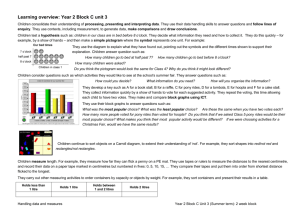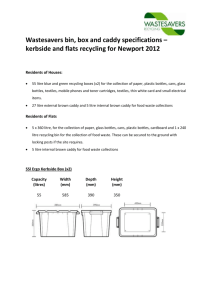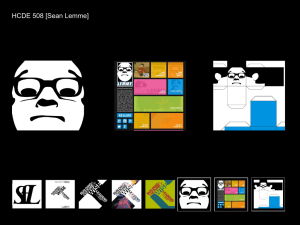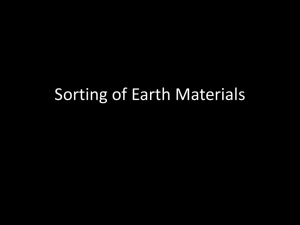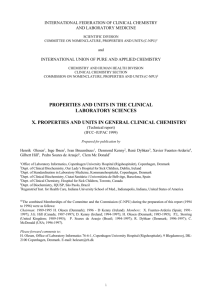Year 2 Block C - Handling data and measures Unit 1
advertisement
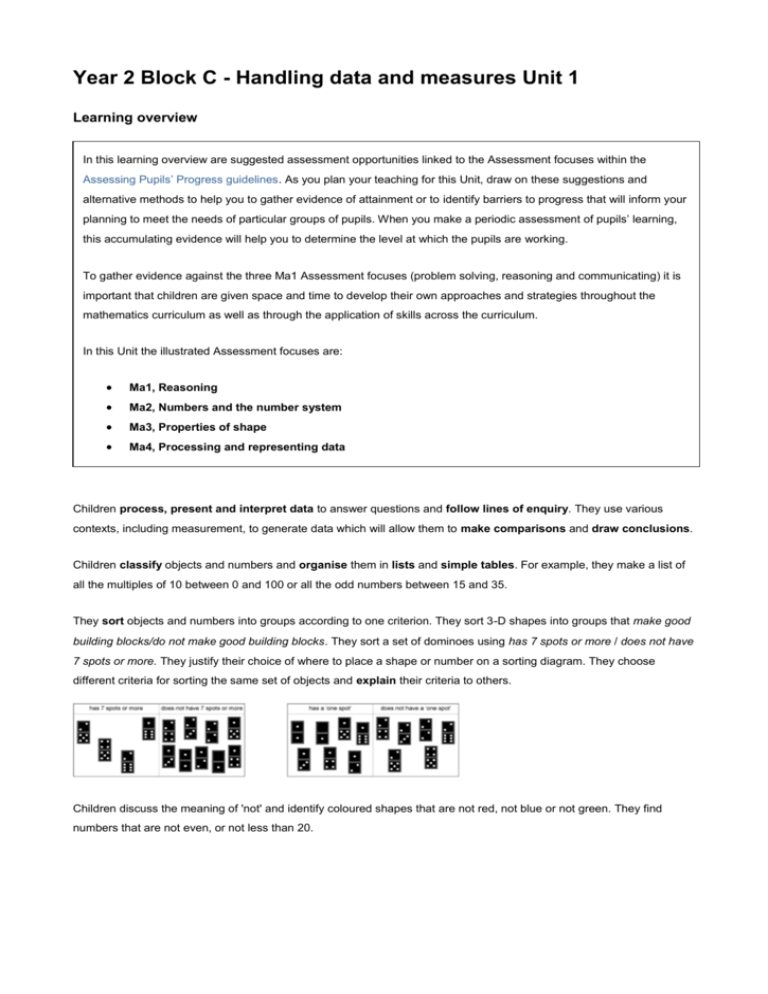
Year 2 Block C - Handling data and measures Unit 1 Learning overview In this learning overview are suggested assessment opportunities linked to the Assessment focuses within the Assessing Pupils’ Progress guidelines. As you plan your teaching for this Unit, draw on these suggestions and alternative methods to help you to gather evidence of attainment or to identify barriers to progress that will inform your planning to meet the needs of particular groups of pupils. When you make a periodic assessment of pupils’ learning, this accumulating evidence will help you to determine the level at which the pupils are working. To gather evidence against the three Ma1 Assessment focuses (problem solving, reasoning and communicating) it is important that children are given space and time to develop their own approaches and strategies throughout the mathematics curriculum as well as through the application of skills across the curriculum. In this Unit the illustrated Assessment focuses are: Ma1, Reasoning Ma2, Numbers and the number system Ma3, Properties of shape Ma4, Processing and representing data Children process, present and interpret data to answer questions and follow lines of enquiry. They use various contexts, including measurement, to generate data which will allow them to make comparisons and draw conclusions. Children classify objects and numbers and organise them in lists and simple tables. For example, they make a list of all the multiples of 10 between 0 and 100 or all the odd numbers between 15 and 35. They sort objects and numbers into groups according to one criterion. They sort 3-D shapes into groups that make good building blocks/do not make good building blocks. They sort a set of dominoes using has 7 spots or more / does not have 7 spots or more. They justify their choice of where to place a shape or number on a sorting diagram. They choose different criteria for sorting the same set of objects and explain their criteria to others. Children discuss the meaning of 'not' and identify coloured shapes that are not red, not blue or not green. They find numbers that are not even, or not less than 20. Assessment focus: Ma2, Numbers and the number system Look for evidence of children using number properties and making connections to familiar sequences of numbers as they sort numbers. Look, for example, for children recognising numbers they say when they count from zero in twos or tens and for children who use odd and even. Assessment focus: Ma3, Properties of shapes Look for evidence of the properties of shapes that children choose to sort 2-D and 3-D shapes. Look for children sorting 3-D shapes using criteria such as rolls down the slope. As they sort 2-D and 3-D shapes, look for children beginning to refer to the features of the shapes. For example, look for children using the number of edges, corners or faces and beginning to recognise 2-D shapes that have a right angle. Children solve problems and respond to questions such as: Are names with five letters the most common? How could we find out? What information should we collect? How shall we organise the information? They listen to others in the class and respond to their suggestions. Children collect data quickly - for example, by holding up a digit card corresponding to the number of letters in their first name - and follow instructions to make a simple table. 3 letters 4 letters 5 letters 6 letters Ann Sam Ali Kate Ajit Tara Mark Halim David Jyoti Pritam Sophie Children answer questions based on their table, such as: What is the most common number of letters in a name? How do you know? How many names have exactly 5 letters? How many names have more than 5 letters? How many names have fewer than 5 letters? How many children are there altogether in the class? How can you tell? Assessment focus: Ma4, Processing and representing data Look for children who begin to suggest what data to collect and organise in order to test a simple hypothesis. For example, children might offer a hypothesis about the most common number of spots on a domino and suggest putting the dominoes into piles with the same number of spots to test the hypothesis. Look for children who suggest practically sorting objects and using this as their record to show others what they did and found. Notice how children respond to a suggestion to record something. Look for children using pictures, lists or block graphs for example. Children use standard units of measure as they follow an enquiry. For example, they sort a set of containers according to whether they will hold a litre of water, less than a litre of water or more than a litre of water. They place the containers appropriately in a large diagram. They carry out similar sorting activities to compare lengths against a metre rule, and weights of various objects against a kilogram, half-kilogram or another given measure. Assessment focus: Ma1, Reasoning Look for evidence of children who can describe how they have sorted their sets of containers or objects. Look for children who use the practical experience of sorting the original set of containers to begin to predict whether a new container would hold a litre of water, less than a litre of water or more than a litre of water and explain why. Objectives End-of-year expectations (key objectives) are emphasised and highlighted Children's learning outcomes are emphasised Assessment for learning Follow a line of enquiry; answer questions by choosing and using suitable equipment and selecting, organising and presenting information in lists, tables and simple diagrams Which soft drink should we serve at our sports day? What information do you need to answer the question? I can decide what information I need to answer a question I can put information in lists or tables Is this a good way to present information? Why? Answer a question by collecting and recording data in lists and tables; represent the data as block graphs or pictograms to show results; use ICT to organise and present data How did you collect the information? Why did you decide to present the information in a list/table? I know how to collect information I can use lists and tables to show what I found out What does your list/table show? How does this help you to answer the question? Use lists, tables and diagrams to sort objects; explain choices using appropriate language, including 'not' How did you sort the objects/numbers? Why have you placed this object in this set? I can sort objects and talk about how I sorted them These objects have been sorted into two sets. How do you think they have been sorted? Why is this object not in the other set? Estimate, compare and measure lengths, weights and capacities, choosing and using standard units (m, cm, kg, litre) and suitable measuring instruments Show me something that you think is just shorter/longer than a metre. How could you check whether you are right? I can find out if something is longer or shorter than a metre I can find out if something will hold a litre of water I can use a balance to compare two things to see which is lighter I can use a balance to find out if something is lighter or heavier than a kilogram or half-kilogram When you use a balance, how could you find out if something is heavier than a kilogram/halfkilogram? What would you need to do? Read the numbered divisions on a scale and interpret the divisions between them (e.g. on a scale from 0 to 25 with intervals of 1 shown but only the divisions 0, 5, 10, 15 and 20 numbered); use a ruler to draw and measure lines to the nearest centimetre Look at this metre ruler. What length does this mark between 10cm and 20cm show? Tell me an object in the classroom that you think is heavier than this 100g bag of cubes/kilogram/half-kilogram. How could you check if it is? Is the water in this measuring jug nearer 1 1/2, 2 litre or 1 litre? I can read numbers on a scale Listen to others in class, ask relevant questions and follow instructions I can listen to children talking about their ideas I can ask them questions about what they have said Show your table to the group. Ask the other children questions that they can answer using the information that your table shows. Are there other questions that the table could help you to answer?
